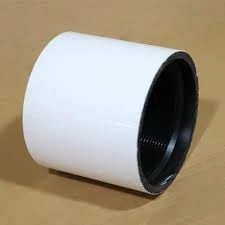- Afrikaans
- Albanian
- Amharic
- Arabic
- Armenian
- Azerbaijani
- Basque
- Belarusian
- Bengali
- Bosnian
- Bulgarian
- Catalan
- Cebuano
- Corsican
- Croatian
- Czech
- Danish
- Dutch
- English
- Esperanto
- Estonian
- Finnish
- French
- Frisian
- Galician
- Georgian
- German
- Greek
- Gujarati
- Haitian Creole
- hausa
- hawaiian
- Hebrew
- Hindi
- Miao
- Hungarian
- Icelandic
- igbo
- Indonesian
- irish
- Italian
- Japanese
- Javanese
- Kannada
- kazakh
- Khmer
- Rwandese
- Korean
- Kurdish
- Kyrgyz
- Lao
- Latin
- Latvian
- Lithuanian
- Luxembourgish
- Macedonian
- Malgashi
- Malay
- Malayalam
- Maltese
- Maori
- Marathi
- Mongolian
- Myanmar
- Nepali
- Norwegian
- Norwegian
- Occitan
- Pashto
- Persian
- Polish
- Portuguese
- Punjabi
- Romanian
- Russian
- Samoan
- Scottish Gaelic
- Serbian
- Sesotho
- Shona
- Sindhi
- Sinhala
- Slovak
- Slovenian
- Somali
- Spanish
- Sundanese
- Swahili
- Swedish
- Tagalog
- Tajik
- Tamil
- Tatar
- Telugu
- Thai
- Turkish
- Turkmen
- Ukrainian
- Urdu
- Uighur
- Uzbek
- Vietnamese
- Welsh
- Bantu
- Yiddish
- Yoruba
- Zulu
Understanding the Functionality and Benefits of Perforated Pup Joints in Oil Drilling
Understanding Perforated Pup Joints in Oil and Gas Industry
In the oil and gas industry, the concept of perforated pup joints is integral to the efficient management of production and transportation processes. These specialized pipe joints play a critical role in ensuring that fluids—whether oil, gas, or water—can be transported from the wellbore to the surface safely and efficiently.
What are Perforated Pup Joints?
Perforated pup joints are short lengths of pipe with strategically placed perforations or holes along their length. These perforations allow for the flow of fluids while maintaining the structural integrity of the piping system. Typically, pup joints are used to connect two larger sections of piping, and their perforated form enables them to serve specific operational needs in various applications, particularly in the completion phase of drilling operations.
Design and Construction
The design of perforated pup joints involves several engineering considerations. They are usually made from high-strength steel or other durable materials, which can withstand the high pressures and corrosive environments typically found in oil and gas operations. The perforations can vary in size and pattern, depending on the intended application. For instance, the perforation size needs to be carefully calculated to balance flow efficiency with the risk of clogging or erosion.
Applications in Oil and Gas Operations
Perforated pup joints are commonly used in various applications, including
1. Well Completion During the completion process of a well, perforated pup joints are used to connect perforated casing sections to facilitate fluid movement from the reservoir to the surface. The perforations ensure that hydrocarbons can flow into the casing, while also providing a pathway for injected fluids during enhanced oil recovery operations.
perforated pup joints

2. Flow Control These joints are often employed in completion assemblies where flow control devices, such as packers or valves, are installed. The perforated design allows for monitoring and manipulation of flow rates from the reservoir, improving overall production efficiency.
3. Subsea and Surface Applications In subsea applications, perforated pup joints allow for the transfer of extracted fluids to surface processing facilities. They are equally essential for surface applications, particularly in gathering and transportation pipelines where control over fluid flow is necessary.
Benefits of Using Perforated Pup Joints
1. Enhanced Flow Capability The primary advantage of using perforated pup joints is their ability to greatly enhance the flow capability of the piping system. By allowing fluids to pass through the pipe more freely, operators can improve production rates and reduce the time required for extraction.
2. Reduced Risk of Blockage The design of perforated pup joints reduces the risk of blockages compared to traditional solid pipes. This is particularly valuable in operations where sediment or other particulates are present in the fluid, as the perforations help to mitigate accumulation.
3. Flexibility and Customization The ability to customize size, strength, and perforation characteristics means that operators can tailor these joints for specific well conditions, making them highly versatile in various environments.
Conclusion
In summary, perforated pup joints represent a crucial element in the design and functionality of oil and gas extraction and transportation systems. Their unique design facilitates efficient fluid flow while addressing the challenges posed by pressure and corrosive materials commonly found in the industry. As the energy sector continues to evolve, the application of advanced materials and engineering practices in the development of perforated pup joints will likely expand, further enhancing operational efficiencies and sustainability. By understanding and effectively utilizing these components, operators can ensure that their production rates meet the demands of an ever-changing market.
-
Tubing Pup Joints: Essential Components for Oil and Gas OperationsNewsJul.10,2025
-
Pup Joints: Essential Components for Reliable Drilling OperationsNewsJul.10,2025
-
Pipe Couplings: Connecting Your World EfficientlyNewsJul.10,2025
-
Mastering Oilfield Operations with Quality Tubing and CasingNewsJul.10,2025
-
High-Quality Casing Couplings for Every NeedNewsJul.10,2025
-
Boost Your Drilling Efficiency with Premium Crossover Tools & Seating NipplesNewsJul.10,2025







